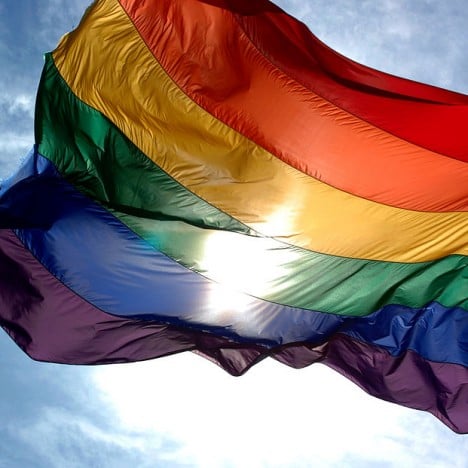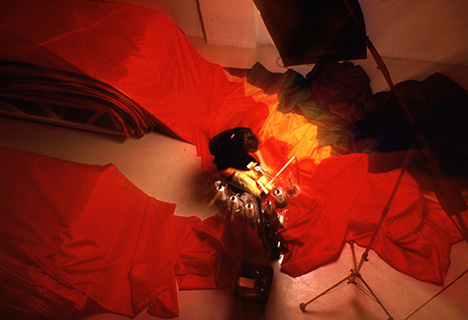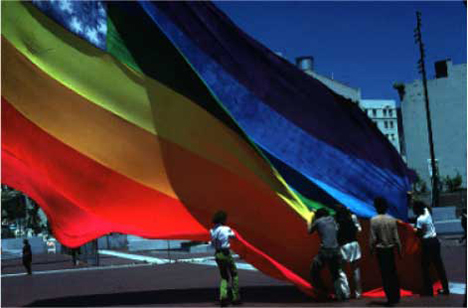
MoMA adds Rainbow Flag to permanent design collection
New York's Museum of Modern Art announced today that it has added the Rainbow Flag, the universal symbol of gay pride, to its permanent design collection.
The flag joins other cultural emblems in the Museum of Modern Art's (MoMA) collection, including the Creative Commons logo, the @ symbol, and the Google Maps pin.
Paola Antonelli, senior curator of architecture and design at MoMA, told Dezeen that the Rainbow Flag has served as a "politically powerful, meaningful, and also aesthetically effective symbol" for almost 40 years.
"The creation of new symbols for a changing world is a significant way for design to give definition and direction to human life, and one of MoMA's goals is to acquire the art of our time," she added.

Artist Gilbert Baker created the multicoloured flag in 1978 in San Francisco. It has since become a widely recognised symbol for the gay, lesbian, bisexual and transgender communities.
The flag features six bands of colour: red, orange, yellow, green, blue and purple.
"We're proud the MoMA collection now includes this powerful design milestone, and there's no more perfect time to share this news than during global celebrations for Gay Pride Month," said a statement from the museum.
Baker was 27 years old when he created the Rainbow Flag.
"I was a big drag queen in 1970s San Francisco. I knew how to sew. I was in the right place at the right time to make the thing that we needed," he said in an interview on the museum’s website.
His idea for the flag emerged in 1976, the year of the US bicentennial. Baker said he was seeing the American flag everywhere, "from Jasper Johns paintings to trashy jeans in the Gap and tchotchkes".
"I thought, a flag is different than any other form of art. It's not a painting, it's not just cloth, it is not just a logo. It functions in so many different ways," he said. "I thought that [the gay community] needed that kind of symbol, that we needed as a people something that everyone instantly understands."
Prior to the Rainbow Flag, the gay community was represented by a pink triangle that had been used in Nazi concentration camps to identify homosexual prisoners.

"We needed something beautiful, something from us," said Baker. "The rainbow is so perfect because it really fits our diversity in terms of race, gender, ages, all of those things. Plus, it's a natural flag — it's from the sky!"
Baker made the first multicoloured flags at the Gay Community Center in San Francisco, enlisting a team of 30 volunteers to help.
They took over the building's attic, where they mixed organic dye in big trashcans and coloured thousands of yards of cotton fabric. The flag was stitched together using a large machine.
They raised the first two flags on June 25, 1978, in the United Nations Plaza in downtown San Francisco. The flag has since become a globally recognised symbol.
"What the rainbow has given our people is a thing that connects us," said Baker. "I can go to another country, and if I see a Rainbow Flag, I feel like that’s someone who is a kindred spirit or [that it's] a safe place to go. It's sort of a language, and it's also proclaiming power."
Antonelli has spearheaded a series of progressive acquisitions for MoMA – last year's additions included DIY electronics products for a collection of "humble masterpieces" and a "4D-printed" dress. Her recent exhibitions have included Design and Violence, a response to the world's first 3D-printed gun, which was hosted online.
"It is important to stay relevant and to look at museums as the R&D of society," she told Dezeen in an interview about the exhibition. "Because curating design is tightly connected to culture and technology, my curatorial stance has had to evolve."